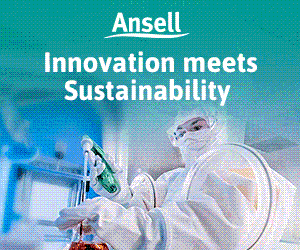One of the global community’s most pressing strategic imperatives is to make transport cleaner, safer and more efficient. And the team at WMG, University of Warwick, is at the forefront of world leading research into next generation recycling capability, with a particular focus on lithium ion batteries used in electric cars.
With the International Energy Agency predicting there could be 230 million electric vehicles on the road worldwide by 2030, and previously cheap metals becoming increasingly scarce, there is an urgent requirement to make battery usage more circular; that is, processing the materials used in batteries so that they can be recycled and put back into use, thus eliminating waste and minimising the need for virgin resources.
As this research into recycling batteries is highly specialised, WMG decided to modify some existing laboratory space to meet the requirements of their research scientists. They asked suppliers to offer solutions for keeping users protected from dangerous gases and fumes.
Thanks to in-house manufacturing facilities and decades of expertise in airflows and containment, we were able to adapt our standard ducted fume cupboard design to a hybrid version including filters
The chemistry experiments involved in this research often produce hydrofluoric acid (HF), which is especially hazardous to handle. The team required two wet scrubbed LEV arms to neutralise the HF before evacuating it to the atmosphere plus two standard LEV arms, as well as a filtered and ducted fume cupboard for additional user protection. An extra requirement was for a highly customised walk-in fume cupboard designed to fit around existing equipment. As specialists in bespoke fume cupboard design and installation, TCS were delighted to rise to the challenge of this brief. Our unique engineered solution allowed the wet scrubbers to be attached to LEV arms, and safely handle HF, whilst remaining compliant with the requirements of BS EN 14175.
The solution
As specialists in bespoke fume cupboard design and installation, TCS were delighted to rise to the challenge of this brief. Our unique engineered solution allowed the wet scrubbers to be attached to LEV arms, and safely handle HF, whilst remaining compliant with the requirements of BS EN 14175.
The scrubber system featured a fully automated dosing system that constantly measures and regulates the pH levels in the neutralisation solution. This avoids the need for manual dosing, creating a simpler process for users and ensuring more accurate and reliable experiments.
As this research into recycling batteries is highly specialised, WMG decided to modify some existing laboratory space to meet the requirements of their research scientists
The walk-in fume cupboard seen on the left here was a bespoke design featuring recess drains in the side cheeks and a bunded sump with perforated trays at the bottom which can withstand weights of 200kg. The sash can be lowered all the way to the ground and the cupboard features a ramp to enable access for equipment on castors.
Thanks to in-house manufacturing facilities and decades of expertise in airflows and containment, we were able to adapt our standard ducted fume cupboard design to a hybrid version including filters. This accommodated the benchtop experiments being conducted where certain chemicals could not be exhausted to the atmosphere.
TCS Business Development Manager Frank Hackett added: “The research that WMG is conducting is highly innovative and I have no doubt that it will contribute to making electric vehicles more sustainable in the future. Labs like theirs are the envy of the research community and I’m delighted that TCS fume cupboards play a central role in this important work.
We are pleased to now be supporting wider EV research with Professor Mark Amor-Segan, WMG, at the same campus, using wet scrubber systems in their destructive battery testing facility. This follows an increase in enquiries about similar projects in the sector, where our ability to adapt standard fume cupboard designs is much sought after. We’re grateful for the recommendations we’ve received from WMG.”




